L’ampleur du marché de la surveillance de l’anesthésie est axée sur l’amélioration de la sécurité des patients pendant les interventions chirurgicales en optimisant l’administration de l’anesthésie. Ceci est réalisé grâce à l'utilisation de diverses technologies telles que l'électroencéphalographie (EEG), l'indice bispectral (BIS) et la surveillance de l'entropie. La surveillance basée sur l'EEG évalue l'activité électrique dans le cerveau, tandis que la surveillance BIS et entropique utilise des indices spécifiques dérivés des signaux EEG pour quantifier la profondeur de l'anesthésie. L’objectif principal est d’éviter une anesthésie inadéquate, qui pourrait conduire à une prise de conscience du patient, ainsi qu’une anesthésie excessive, qui pourrait présenter des risques de complications. En fournissant des informations en temps réel sur la profondeur de l'anesthésie, ces technologies visent à garantir que les patients restent inconscients et sans douleur, minimisant ainsi le risque de complications et améliorant les résultats chirurgicaux. La profondeur du marché mondial de la surveillance de l’anesthésie devrait atteindre 306 001,97 milliers de dollars d’ici 2030, avec un TCAC de 5,9 % au cours de la période de prévision 2023-2030.
Restez informé, restez en bonne santé ! Pour en savoir plus sur la visite du marché ici, https://www.databridgemarketresearch.com/reports/global-owned-of-anesthesia-monitoring-market
Hôpitaux : Les hôpitaux constituent le segment leader du marché de la surveillance de l’anesthésie, qui devrait détenir une part de marché substantielle de 45,89 %. Il représente l’un des principaux utilisateurs finaux de systèmes de surveillance de la profondeur de l’anesthésie. Il s’agit d’établissements de santé complets qui proposent une large gamme de services médicaux, notamment diverses interventions chirurgicales. Les hôpitaux pratiquent des interventions chirurgicales de différentes complexités et spécialités, ce qui rend cruciale la nécessité d’une surveillance précise et avancée de l’anesthésie. Ses investissements continus dans les systèmes de surveillance de l'anesthésie reflètent un engagement fiable envers la sécurité des patients et l'intégration de technologies de pointe pour améliorer la qualité de l'administration de l'anesthésie.
Centres chirurgicaux ambulatoires : Les centres chirurgicaux ambulatoires (ASC) sont des installations spécialement conçues pour les interventions chirurgicales ambulatoires. Contrairement aux hôpitaux, les ASC se concentrent sur la fourniture de services chirurgicaux le jour même et les patients ne passent généralement pas la nuit. Dans les ASC, les procédures sont souvent moins complexes que celles pratiquées en milieu hospitalier. La surveillance approfondie de l'anesthésie dans les ASC est importante pour garantir le confort et la sécurité des patients lors des chirurgies ambulatoires. Ces centres peuvent utiliser des systèmes de surveillance d'anesthésie adaptés à leurs besoins spécifiques et à la nature des interventions chirurgicales réalisées en ambulatoire.
Cliniques : Les cliniques sont des établissements de santé qui fournissent des services médicaux, notamment des consultations, des examens et des traitements. Bien que les cliniques ne puissent pas effectuer d'interventions chirurgicales majeures sur place, elles peuvent effectuer des interventions chirurgicales mineures ou des procédures nécessitant une anesthésie. La profondeur de la surveillance de l'anesthésie dans les cliniques est importante pour garantir l'administration et la surveillance appropriées de l'anesthésie au cours de telles procédures. Les cliniques varient considérablement en taille et en spécialisation, et l'utilisation de la technologie de surveillance de l'anesthésie dépend de l'étendue des services qu'elles offrent.

Sécurité améliorée des patients : la surveillance continue de la profondeur de l'anesthésie garantit un contrôle précis, réduisant ainsi le risque de sous-administration et de suradministration de l'anesthésie, améliorant ainsi la sécurité des patients pendant les interventions chirurgicales.
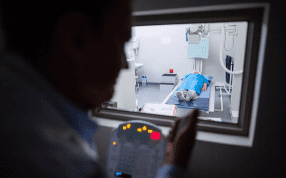
Gestion optimisée de l'anesthésie : les prestataires de soins de santé peuvent effectuer des ajustements en temps réel en fonction de la profondeur précise des informations sur l'anesthésie, ce qui conduit à des dosages d'anesthésiques optimisés et à de meilleurs résultats pour les patients.
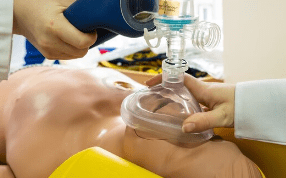
Temps de récupération réduit : un réglage précis des niveaux d'anesthésie permet une sortie plus rapide et plus douce de l'anesthésie, contribuant ainsi à réduire le temps de récupération postopératoire et à améliorer l'expérience globale de récupération des patients.

Rentabilité : en évitant le recours excessif à l'anesthésie et en minimisant les complications, la surveillance approfondie de l'anesthésie peut potentiellement entraîner des économies pour les établissements de santé, ce qui en fait une solution rentable.
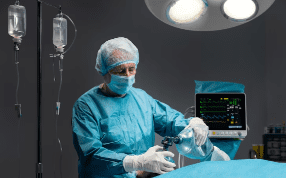
Soins personnalisés aux patients : la gestion individualisée de l'anesthésie permet aux professionnels de la santé d'adapter le schéma d'anesthésie aux besoins spécifiques de chaque patient, favorisant ainsi des soins personnalisés et plus efficaces.
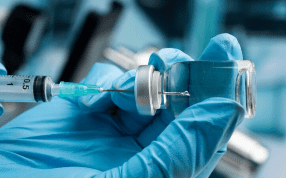
Effets secondaires minimisés : une surveillance précise aide à minimiser les effets secondaires associés à l'anesthésie, tels que les nausées et les vomissements postopératoires, contribuant ainsi à une expérience patient plus confortable et positive.
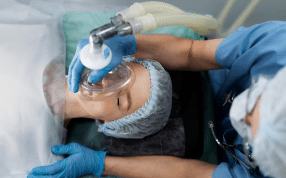
Gestion améliorée de la conscience de l'anesthésie : la surveillance de la profondeur de l'anesthésie aide à prévenir les incidents de conscience de l'anesthésie, au cours desquels les patients reprennent conscience pendant l'intervention chirurgicale, ce qui entraîne une amélioration du bien-être général du patient.
Dans la région Asie-Pacifique, la Chine domine le marché de la surveillance de l’anesthésie, grâce à une conscience accrue des effets néfastes de l’anesthésie. Le marché, évalué à 34,30 millions de dollars en 2022, devrait atteindre 62,55 millions de dollars d'ici 2030, reflétant un TCAC croissant de 7,8 % au cours de la période de prévision de 2023 à 2030. La domination de la Chine est enracinée dans la reconnaissance croissante de l'importance de l'anesthésie. surveillance pour la sécurité des patients. La dynamique du marché en Chine, avec l'augmentation des investissements dans les soins de santé, les progrès de la technologie médicale et l'accent mis sur le bien-être des patients, contribuent tous à la demande croissante de solutions sophistiquées de surveillance de l'anesthésie en profondeur dans la région.
Explorez la domination de la Chine sur le marché de la surveillance de l'anesthésie, cliquez pour obtenir des informations ici,
https://www.databridgemarketresearch.com/reports/asia-pacific-degree-of-anesthesia-monitoring-market
En Amérique du Nord, les États-Unis devraient dominer le marché mondial de la surveillance de l’anesthésie, en raison d’une augmentation substantielle de la demande de dispositifs de surveillance de l’anesthésie. Les pratiques avancées du système de santé américain et les initiatives stratégiques des principaux acteurs du marché contribuent à sa domination dans la région nord-américaine. Le marché devrait atteindre 150,98 millions de dollars d'ici 2030, avec une augmentation notable par rapport à la valeur estimée de 89,87 millions de dollars en 2022, reflétant un TCAC croissant de 6,7 %. Cette croissance souligne la prise de conscience croissante du rôle essentiel de la surveillance de l'anesthésie pour assurer la sécurité des patients pendant les interventions chirurgicales, s'aligner sur l'évolution des pratiques médicales et mettre l'accent sur l'intégration des technologies avancées dans les soins de santé.
Découvrez pourquoi les États-Unis connaissent une croissance sur le marché de la surveillance de l'anesthésie. Lisez les informations complètes sur le marché ici, https://www.databridgemarketresearch.com/reports/north-america-degree-of-anesthesia-monitoring-market
La profondeur du marché de la surveillance de l’anesthésie apparaît comme une force essentielle pour améliorer la sécurité des patients lors des interventions chirurgicales. En exploitant des technologies telles que l'EEG, le BIS et la surveillance de l'entropie, les établissements de santé, en particulier les hôpitaux, illustrent leur engagement en faveur d'une administration d'anesthésie de précision. L'essor notable du marché américain et la domination de la Chine dans la région Asie-Pacifique soulignent l'adoption mondiale de ces avancées, promettant un avenir où les chirurgies sont définies par des risques minimisés, des résultats optimisés et une approche personnalisée des soins aux patients. Pour l’avenir, la trajectoire du marché de la surveillance de l’anesthésie est prometteuse, propulsée par les progrès technologiques continus et un dévouement inébranlable à la précision, à la sécurité et aux expériences individualisées des patients. Alors que l’innovation rencontre la compassion, chaque progrès contribue à un avenir plus sain et plus sûr dans le paysage dynamique des soins de santé.
Contactez-nous pour découvrir les dernières innovations des géants de l'industrie et pour des rapports aussi intéressants, https://www.databridgemarketresearch.com/contact